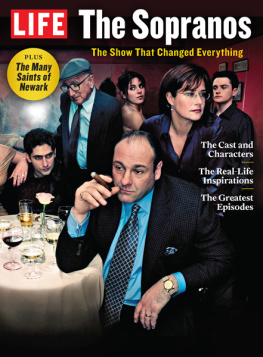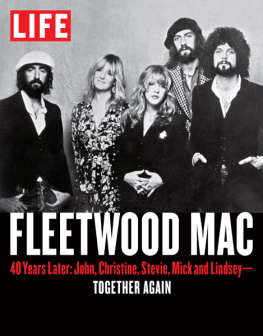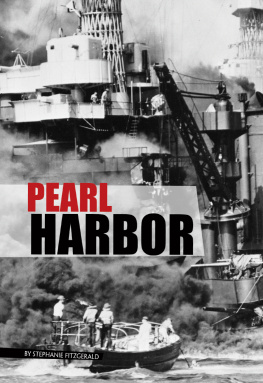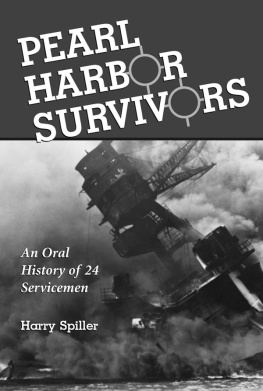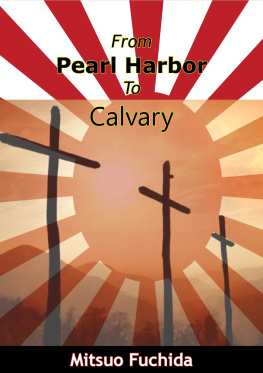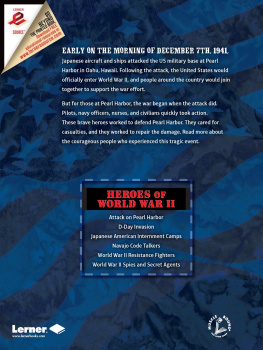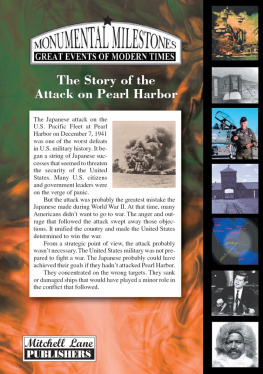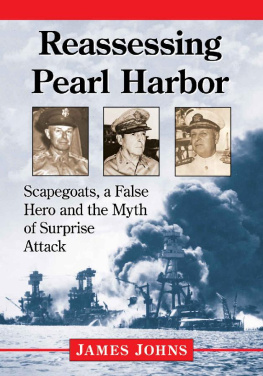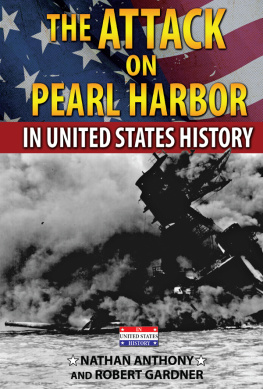The Editors of LIFE - LIFE Pearl Harbor: 75 Years Later: The Attack, the Aftermath, the Legacy
Here you can read online The Editors of LIFE - LIFE Pearl Harbor: 75 Years Later: The Attack, the Aftermath, the Legacy full text of the book (entire story) in english for free. Download pdf and epub, get meaning, cover and reviews about this ebook. year: 2016, publisher: LIFE BOOKS, genre: History. Description of the work, (preface) as well as reviews are available. Best literature library LitArk.com created for fans of good reading and offers a wide selection of genres:
Romance novel
Science fiction
Adventure
Detective
Science
History
Home and family
Prose
Art
Politics
Computer
Non-fiction
Religion
Business
Children
Humor
Choose a favorite category and find really read worthwhile books. Enjoy immersion in the world of imagination, feel the emotions of the characters or learn something new for yourself, make an fascinating discovery.

- Book:LIFE Pearl Harbor: 75 Years Later: The Attack, the Aftermath, the Legacy
- Author:
- Publisher:LIFE BOOKS
- Genre:
- Year:2016
- Rating:3 / 5
- Favourites:Add to favourites
- Your mark:
- 60
- 1
- 2
- 3
- 4
- 5
LIFE Pearl Harbor: 75 Years Later: The Attack, the Aftermath, the Legacy: summary, description and annotation
We offer to read an annotation, description, summary or preface (depends on what the author of the book "LIFE Pearl Harbor: 75 Years Later: The Attack, the Aftermath, the Legacy" wrote himself). If you haven't found the necessary information about the book — write in the comments, we will try to find it.
LIFE commemorates the 75th anniversary of the attacks on Pearl Harbor.
The Editors of LIFE: author's other books
Who wrote LIFE Pearl Harbor: 75 Years Later: The Attack, the Aftermath, the Legacy? Find out the surname, the name of the author of the book and a list of all author's works by series.
LIFE Pearl Harbor: 75 Years Later: The Attack, the Aftermath, the Legacy — read online for free the complete book (whole text) full work
Below is the text of the book, divided by pages. System saving the place of the last page read, allows you to conveniently read the book "LIFE Pearl Harbor: 75 Years Later: The Attack, the Aftermath, the Legacy" online for free, without having to search again every time where you left off. Put a bookmark, and you can go to the page where you finished reading at any time.
Font size:
Interval:
Bookmark:
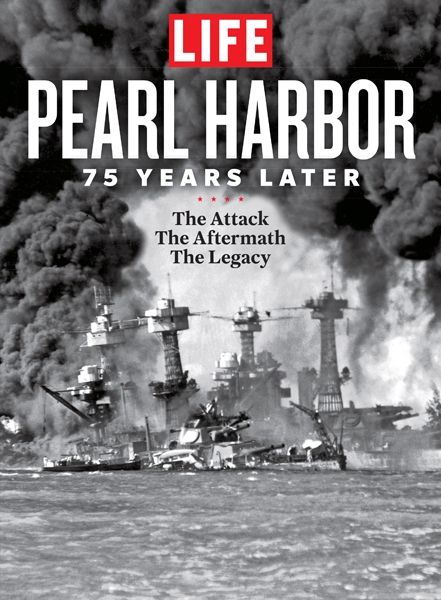

PEARL HARBOR
75 YEARS LATER
* * *
The Attack
The Aftermath
The Legacy

TIME LIFE PICTURES/U.S. NAVY/THE LIFE PICTURE COLLECTION/GETTY
Rescue boats from the Maryland (left) surrounded the sunken Oklahoma (hull visible at right). In the background, the West Virginia was in flames.
CONTENTS

U.S. NAVY
Sailors at Kaneohe Bay tried to beach a PBY Catalina that had been strafed early in the attack. A later strike would finish off the reconnaissance seaplane.
By John W. Dower
INTRODUCTION
THE LEGACY OF AN ATTACK
What Pearl Harbor Means Today
By John W. Dower

Walter Sanders/Black Star
On the day after the attack, stunned Americans were eager for anything that might shed light on the terrible new world they now inhabited. Here, the Embassy Newsreel theater in New York City was a magnet for passersby hoping to see images from Pearl Harbor or anywhere else that might suddenly have become important.
Three-quarters of a century have passed since Japans surprise attack on Pearl Harbor on December 7, 1941, and only a few survivors are left to recall that shocking day. Even after they are gone, however, the memory will remain. Remember Pearl Harbor is branded on the collective American consciousness.
This is true for many reasons. Pearl Harbor is Americas preeminent symbol of innocence and victimization, coupled with righteous fury, as Henry Luce called it in the essay that opens this volume. Japans attack propelled the United States out of isolationism. It triggered the countrys emergence as a great power in the most devastating war of modern times, a global conflict against Nazism, fascism, and Japanese aggression that ended in thoroughgoing victory. And World War II, in turn, set the stage for American eminence in the postwar world that followed, right up to the present day.
December 1941 seems almost quaintly far away. Americas war began with battleships (the prime Japanese target at Pearl Harbor) and propeller warplanes. It ended with nuclear weapons. Telephone, telegraph, radio, and newsprint dominated communicationsyears before television caught on and seemingly eons before todays real-time digital information sharing.
The military and civilian bureaucracy of seven decades ago also was relatively lean compared to the sprawling leviathan that exists today, with no less than seventeen intelligence agencies. Its small size did not prevent it from being riddled with turf warsnot only between the civilian and military sectors, but also within them. These rivalries, such as the friction between the Army and Navy commands in Pearl Harbor, impeded information sharing and were one reason Japans attack caught the U.S. military by surprise.
The genesis of todays national security state is to be found not just in the mobilization for World War II, but also in early postwar determination never again to be caught unaware by an adversary. But that, tragically and astonishingly, is precisely what did happen almost exactly six decades after Pearl Harbor, when Islamic terrorists attacked the World Trade Center and the Pentagon on September 11, 2001.
Across the country, newspapers almost instinctively responded to al-Qaedas atrocity with headlines along the lines of A New Pearl Harbor! Caught-by-surprise-again was the message, and its racial subtext was only partially obscured. The attack had come, once again, from non-Western, non-Christian adversaries whose willingness and ability to take great risks had been greatly underestimated.
America responded to the September 11 attack in essentially the same way it did to December 7: by declaring war. In this case, however, the enemy was not a nation, but rather an amorphous and elusive target identified as terror. At the same time, political leaders and most of the media moved quickly to ensure that one of the darkest responses to Japans attack was not repeated. It was out of the question, they argued, to even consider rounding up and incarcerating people of Arab or Muslim identity who resided in the United States, as had been done to men, women and children of Japanese ancestry after Pearl Harbor. This accomplished nothing beyond leaving a great stain on our nations image and honor.
Most of the reverberation between the two attacks was unfortunately less uplifting than the lesson drawn from the Japanese-American internment. In both instances, a great deal of finger-pointing took place. The intelligence failure of September 11, for example, exposed the fact that possessing a gargantuan intelligence apparatus increased rather than decreased the sort of turf wars that plagued the United States in 1941. At the same time, the war on terror made painfully clear thatunlike in World War IIpossessing vastly superior military might was no guarantee of victory.
For Americans, World War II ended in less than four years (December 1941 to August 1945). The war on terror has dragged on for 15 years as this book goes to press, still with no end in sight. The world in which war pitted nation-state against nation-state has been replaced by irregular warfare involving non-state antagonists.
Beginning in 1942, the Hollywood director Frank Capra produced a run of Why We Fight films for the U.S. Army with series titles like Know Your Enemy. Pearl Harbor had revealed that it was not just recruits and ordinary citizens who failed to know the enemy, but top leaders as well. The same can be said of September 11. In 1941, this was true of the Japanese side as well.
Tactically, Pearl Harbor was a brilliant victory on Japans part. To send six aircraft carriers, more than 350 attack planes, and a supporting fleet of warships across the Pacific without being detected was a stunning accomplishment. It was also strategic folly. Even Admiral Yamamoto Isoroku, who planned the attack and is often quoted as warning that Japan could sustain war against the materially superior United States only for a limited time, was carried away by hubris. The aim of a surprise attack, he told Japans navy minister, was to fiercely attack and destroy the U.S. main fleet at the outset of the war, so that the morale of the U.S. Navy and her people goes down to such an extent that it cannot be recovered. This, it was hoped, would ensure some sort of termination of hostilities that left Japan in control of its strategic conquests in Southeast Asia.
The attack did just the opposite, of course. But as we know from other secret records of Japans war planners, it was possible to marshal all sorts of rational arguments as to why the United States would cave in. Many of these arguments, indeed, echo Henry Luces harshly critical view of pre-Pearl Harbor Americas pusillanimous decadence, isolationist sentiments, and lack of unity and competent organization.
To these, Japans wishful strategists added further reasons for looking forward to success. Germany would prevail against England and the Soviet Union. The United States would find it difficult to mount a two-front war in Europe and Asia. Sentiment favoring appeasement was known to exist among some American leaders, who saw Japan as a natural stabilizing force against the spread of communism in Asia. Japans fighting forces were huge and seasoned by combat in China. And when push came to shove, the esprit de corps of the emperors loyal soldiers and sailors would be more than sufficient to overcome Americas material superiority.
Font size:
Interval:
Bookmark:
Similar books «LIFE Pearl Harbor: 75 Years Later: The Attack, the Aftermath, the Legacy»
Look at similar books to LIFE Pearl Harbor: 75 Years Later: The Attack, the Aftermath, the Legacy. We have selected literature similar in name and meaning in the hope of providing readers with more options to find new, interesting, not yet read works.
Discussion, reviews of the book LIFE Pearl Harbor: 75 Years Later: The Attack, the Aftermath, the Legacy and just readers' own opinions. Leave your comments, write what you think about the work, its meaning or the main characters. Specify what exactly you liked and what you didn't like, and why you think so.




